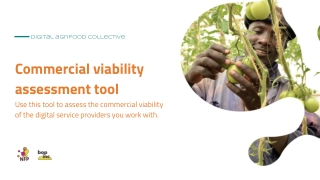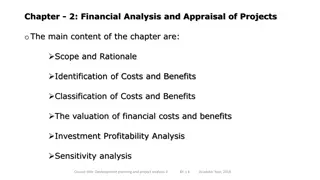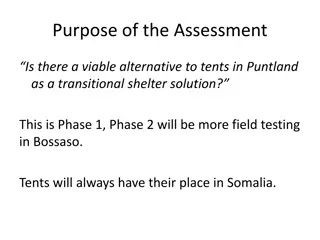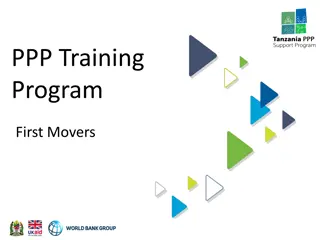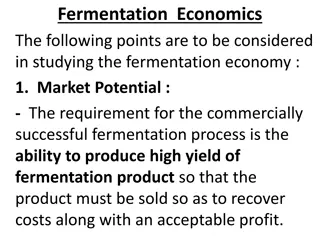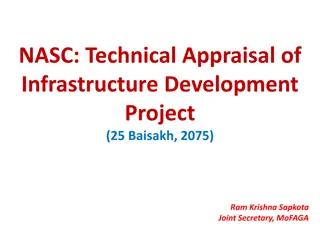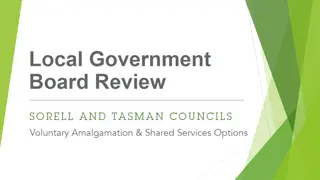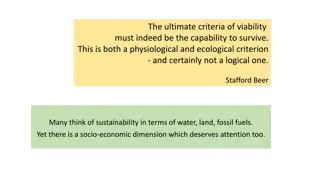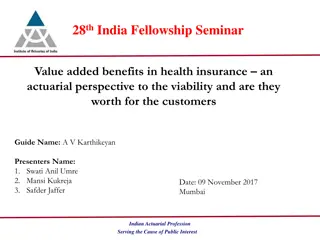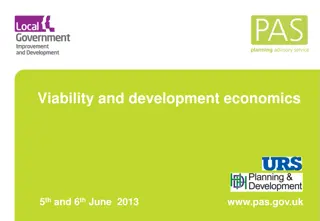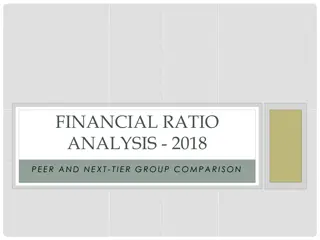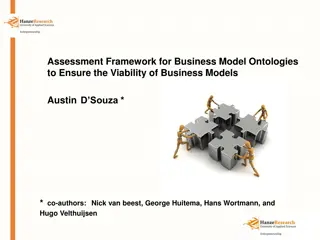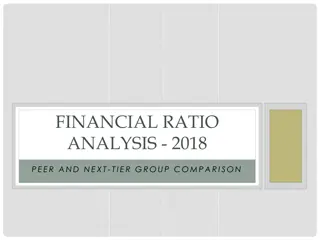Assessing Viability in Housebuilding: A Comprehensive Perspective
Understanding the historical context and policy landscape of land taxation and development in the UK, this presentation delves into the intricacies of assessing viability in housing projects. It emphasizes the importance of balancing costs, standards, and requirements to ensure competitive returns for both landowners and developers, thereby facilitating sustainable development and tackling the national housing crisis effectively.
Download Presentation

Please find below an Image/Link to download the presentation.
The content on the website is provided AS IS for your information and personal use only. It may not be sold, licensed, or shared on other websites without obtaining consent from the author.If you encounter any issues during the download, it is possible that the publisher has removed the file from their server.
You are allowed to download the files provided on this website for personal or commercial use, subject to the condition that they are used lawfully. All files are the property of their respective owners.
The content on the website is provided AS IS for your information and personal use only. It may not be sold, licensed, or shared on other websites without obtaining consent from the author.
E N D
Presentation Transcript
1 Assessing viability - A housebuilders perspective Philip Barnes Group Land and Planning Director Barratt Developments PLC July 2015
2 Structure The history Policy Looking backwards Our approach The battle lines Some ideas
3 History shaped by various attempts to tax land betterment Churchill s Betterment Levy (1930s) Development Land Tax (1970s) Section 106 (1971 - now) Planning Gain Supplement (1990s) CIL (2012 - onwards) Gordian Knot why? Planning system post 1947 was only half the job. Nationalised development rights but not land ownership or land value Planning delivery = land, plans and building (not just plans and building)
4 Policy Background "Pursuing sustainable development requires careful attention to viability and costs in plan making and decision taking. Plans should be deliverable . . . To ensure viability the costs of any requirement to be applied to development such as requirements for affordable housing, standards, infrastructure contributions or other requirements should, when taking account of normal cost of development and mitigation, provide competitive returns to a willing landowner and willing developer to enable the development to be delivery (Para 173, NPPF) "LPA's . . . should assess the likely cumulative impacts on development in their area of all existing and proposed local standards, SPD's and policies that support the development plan, when added to the nationally required standards. In order to be appropriate, the cumulative impact of these standards and policies should not put the implementation of the plan at serious risk, and should facilitate development through the financial cycle (Para 174, NPPF) Regulation 14 requires that a charging authority, in setting CIL rates must aim to strike what appears to be the charging authority to be an appropriate balance between the desirability of funding infrastructure from CIL and the potential effects (taken as a whole) of the imposition of CIL on the economic viability of development (Para 7 CIL Guidance Note)
5 Policy Guidance Sites and scale of development in the plan should not be subject to such a scale of obligations and policy burdens that their ability to be developed viably is threatened (Para 001, NPPG) A competitive return for the landowner is the price at which a reasonable land owner would be willing to sell their land for development. The price will need to provide an incentive for the landowner to sell in comparison with the other options available ( current use value of the land or its value for a realistic alternative use that complies with planning policy) (Para 024, NPPG) When discussing costs to be included in the viability process all development costs should be taken into account
6 Policy in summary Viability is a material consideration Requirements must not threaten viability of either a plan or a development Must ensure a competitive return for a willing landowner and willing developer Why? Housing crisis is a national priority new viable supply is essential Key Tools: Harman Report, RICS report on Planning and Viability and HCA Toolkit
7 What are these Requirements ? Affordable housing S106 Funded by the land Clear public benefits CIL Lifetime Homes Energy reduction measures For 85% of UK locations (excluding London) Cannot afford 30% AH and CIL 30% AH + 15k/plot planning obligations via CIL S106 requires 350 p.s.f. sales values
8 Our approach to measure viability (1/3) All housebuilders use simple Residual Land Value model Step 1 Step 2 Step 3 Gross Development Costs Gross Development Value Residual Land Value What we pay the landowner Construction above and below ground External works Fees Site Management Preliminaries CIL Planning obligations Finance Sales and Marketing costs Anticipated sales value of completed development Estimate /sqm x total floor space Discounted receipt from affordable homes Minus Equals
9 Our approach to measure viability (2/3) We compete hard for land our raw material 2nd hand sales prices dictate land price GDV (sales values) is derived from sales values in 2nd hand market GDV = Step 1 of defining residual land value (land price = output at Step 3 not a cost input at Step 2) Profit is regarded as a cost land is not Profit/build costs don t move much Variables = selling prices and land value We need land value (from RLV model) to be high in order to beat competitors and secure land Therefore we want: Costs low so long as buildable and meet BfL12 P.S.F. revenues high so long as we know our sales team can reach them This generates the winning bid
10 Easy to lose sight of wider financial benefits of new homes?
12 So where are the battle lines? Profit Externals Sales values Contingencies Fees
13 Profit (1/2) NPPG / Harman / RICS = Silent 20% of GDV (not cost) Needs to be a competitive return to both landowner and developer Development is an activity that carries substantial risks in the best of circumstance and, in my experience, developers generally seek a return of 15- 20%, ideally more, to reflect that fact (Weybridge appeal) The DV sets the level of profit required as 18%, whereas I would expect a figure of 20% to be used, bearing in mind the risks associated with the current housing market (Lowestoft appeal)
14 Profit (2/2) Profit 20% of GDV (GDV P16 EVA Affordable Housing And CIL London Borough of Barking) The national housebuilders figures are to be preferred and that a figure of 20% of GDV, which is at the lower end of the range, is reasonable (Shinfield Appeal) The key potentially influential variables to be fed into the appraisals were primarily the assumptions as to contributions to infrastructure and SAMM, existing use value, incentives to existing owners and developer s profit. It is axiomatic that, unless the latter is anticipated to be adequate, the development simply would not take place (Weybridge appeal)
15 Why do we need 20% profit in the appraisal? Compensate for high risk Protects us in the event of costs overrunning: Virtually always do Company profit 14% last year Less than 0% for last 5 years Our lenders expect this. They need a reason to lend to housebuilders! The City expects this. They need a reason to buy Barratt shares Investors will abandon Barratt if repeat pre 2007 irresponsible land buying: Share price and market capitalisation falls Unable to raise finance to do developments Money is too expensive
16 What about blended profit? Open Market Affordable Profit level 20% 6% Not acceptable to Barratt Not supported by appeal decisions Assumption of no sales risk is wrong Contractor margin not appropriate for speculative development: Speculating on planning, ground, build No possibility of a claim Margin should link to risk (Harman/RICS)
17 Sales Values and Build Costs Values https://encrypted-tbn2.gstatic.com/images?q=tbn:ANd9GcQwY0rYbyA_vqaRgcvHLnIyP6SUDWuTcEFHiO2Bc21VxNCbp1_RvA Use comparables Selling prices not window prices Costs BCIS but must add externals and abnormals Abnormals are a normal development cost present on every site Bespoke costs can sometimes be useful: avoids penalising higher quality developments but must be justified can t be developers preference at the expense of public interest
18 Land Value (1/2) The RLV output (not input) EUV or AUV plus significant uplift is appropriate for brownfield Greenfield = c20-25% of GDV is what is needed to incentivise landowner to sell Primary issue is that planning gives land it s value Landowners must be offered an attractive land value to release the site for development Key is to capture the appropriate level of the land value uplift for communities big issue is how? Impossible for state to buy at agricultural and sell at housing Shinfield Appeal : 50% of the uplift to landowner is reasonable
19 Land Value (2/2) Based upon our assessments of the ratio of Residual Land Value to GDV, we have taken a figure of 25% GDV for the level at which RLV may need to reach in order to incentivise the landowner sufficiently to bring forward his parcel of land (Para 3.19 EVA Darlington) There is however a degree of consistency in the treatment of land value as a percentage of GDV agreed with stakeholders across 3 Local Authority areas Leeds 20% East Riding 20% Selby 25% (Para 3.14 Pioneer Report into Land Value in Yorkshire) I am in any event not convinced, based upon experience, that the levels of land value as a share of GDV are realistic and that most landowners would be prepared to sell at figures in the region of 10% to 20% of GDV (Para 2.13 PINS Report into Eden Valley Core Strategy)
20 Day to day areas of dispute Inflated revenues No allowance for contingencies Costs with unrealistic/ally low externals, sales, marketing and finance costs Profits 20% of GDV sometimes not being accepted Unrealistically low landowner incentivisation: Landowners will not sell their family silver cheaply Especially greenfield Net developable areas vs gross development area Gross internal area vs gross external area
21 Questions / Issues Land promoters where does their profit sit? Can t come out of ours! Must differentiate between developers and builders Role of existing use values (greenfield / brownfield) Off plan vs allocated sites KISS
22 Some ideas Sharing costs for common evidence Especially for local plans Fast-track arbitration for application 2-4 weeks result Its not rocket science Closer cross-sector partnerships CLG / LGA / PAS / HBF / PINS / RICS Joint sector guidance manual? Regional presentations / road trip?


